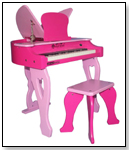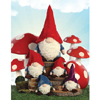|
|
Retailing Tips: How to Get Rapid Turnover for Quick Profits Small POS Changes Result in Big SavingsWith additional reporting by Pete Fernbaugh, Chris Lundy, Claudia Newcorn, Marie Raven and Brenda Ruggiero
Quick turnover and tight inventory control help you stay afloat in a bleak economic climate. In May 2010, TDmonthly Magazine spoke with 43 specialty retailers and several retailing experts to get their best tips: 1. Know What Toys Are Selling. Monitor what goes into and out of your store by using a POS software program that keeps track of inventory as you buy and sell it. POS programs can be used to generate sales and inventory reports, for more accurate inventory control. 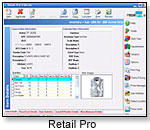 Several retailers cite Retail Pro and QuickBooks as easy-to-use favorite programs (see comparison below). Several retailers cite Retail Pro and QuickBooks as easy-to-use favorite programs (see comparison below).Compare the computerized count to a physical count every few months to measure how much absent inventory actually sold, and whether any merchandise might have been lifted. Tips to Using a POS System Effectively
2. Analyze Your Findings. Be critical of your sell-through performance. Michael Levy, Ph.D, former editor of “Journal of Retailing,” and Barton A. Weitz, Ph.D., executive director of the David F. Miller Center for Retailing Education and Research at the University of Florida, say that generally, inventory present at any given time should equal no more than twice the amount of sales for that month; more than that means you most likely overbought.
Levy and Weitz advise those in this predicament to streamline purchases by only buying items that have proven to be reliable sellers in the past. David Campbell, owner of Amazing Toys in Great Falls, Mont., told TDmonthly, "You can bring up your average turns by not running out of your best sellers and buying them in small quantities, frequently. Our cash flow is acceptable because we do focus on keeping the best sellers in, no matter what the environment appears to be. " 3. Buy Only What You Can Sell That Month. Retailers are adapting to a tumultuous economy by keeping their inventory in fighting shape – buying less and buying more effectively, and therefore selling more. Before making a purchase, consider how many of the items will actually sell. “I don't order anything I can't sell half of before the invoice is due,” James Dello Stritto, manager of Magic Box Ltd. in New Orleans, La., told TDmonthly. Barbara Fineblum, owner of Barston's Child's Play in Baltimore, Md., agrees. "We only order 30 days’ worth if we're paying in 30 days. Then we look at the numbers and reorder." 4. Use Pricing To Your Advantage. Consumers are increasingly counting their cash, so lower-priced items can help move inventory. A bargain price is a selling point in and of itself. 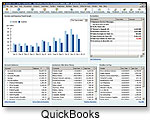 Anna Barr, owner of Anna’s Toy Depot in Austin, Tex., told TDmonthly, “I use my pricing to increase inventory turnover. Because I offer very low-end items, I get more turnover (due to) more frequent visits.” Anna Barr, owner of Anna’s Toy Depot in Austin, Tex., told TDmonthly, “I use my pricing to increase inventory turnover. Because I offer very low-end items, I get more turnover (due to) more frequent visits.”David Ekwall of The Wooden Toy in Wethersfield, Conn., takes a similar approach. "As opposed to items that sell at $100-120, we'll look at items for $50 or $25.” Susan Ward, co-owner of Cypress Technologies and About.com small business guide, notes that while this can at times be a sound strategy, retailers should also mind their margins. "The price you charge has to be competitive but still allow you to make a reasonable profit. Set your pricing through a process of calculating your costs, estimating the benefits to consumers, and comparing your products, services and prices to others that are similar.” Stocking low-priced items in mass quantities can appear to make for a quick and easy profit, but if the per-item margin is extremely low, high sales numbers might not result in stellar net profits.
Retailers can increase turnover with creative visual merchandising and by using the internet to move tough-to-sell items. Casey Sartain, buyer for Tutoring Toy in Salt Lake City, Utah, believes that “keeping things straight and organized” is key. “You can have the best product in the world, but when it's thrown on the shelf, or shoved behind something, it just won't sell. Making it aesthetically pleasing makes a world of difference. It's all about presentation.” 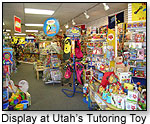 Mary DeSilva of Smart Kids Company in Greenwich, Conn., has used online social networks in her sales promotions. "I have noticed a number of times I will post something on Facebook, and the number of people who then visit our Web site increases substantially. Or the item I post on Facebook ... will sell more than we typically would either that day or the next day." Dello Stritto, however, warns that his forays into “target marketing: Facebook, Twitter, e-mail newsletters” have not always been successful, admitting that “sometimes it works (and) sometimes it doesn't.” Mary DeSilva of Smart Kids Company in Greenwich, Conn., has used online social networks in her sales promotions. "I have noticed a number of times I will post something on Facebook, and the number of people who then visit our Web site increases substantially. Or the item I post on Facebook ... will sell more than we typically would either that day or the next day." Dello Stritto, however, warns that his forays into “target marketing: Facebook, Twitter, e-mail newsletters” have not always been successful, admitting that “sometimes it works (and) sometimes it doesn't.” Many retailers have also begun taking to online sales to clear out particularly difficult items. “We did open an Amazon store in early June to push out dead inventory after in-store promotions did not work,” Angel Stahl, owner of Angel's Toy Barn in Greensburg, Penn., told TDmonthly. Experts agree that increasing turnover offers tremendous business benefits. “Increasing inventory turnover can increase sales volume, improve salesperson morale, reduce the risk of obsolescence and markdowns, and provide more resources to take advantage of new buying opportunities,” explain Levy and Weitz. “Having money available to buy merchandise late in a season can open up profit opportunities. Buyers can take advantage of special prices offered by vendors that have too much inventory left over. Buyers can sell (this merchandise) to customers at the normal price, and increase their gross margins.” Retail Pro and Quickbooks: A Comparison
RETAIL PRO Geared toward the strictly retail business, Retail Pro offers extensive inventory tracking.
QUICKBOOKS QuickBooks can be applied to retail stores as well as to various other types of businesses. It monitors finances extensively and thoroughly, and offers some assistance with inventory control.
 Writer's Bio: Ashley Heaton has written articles for magazines and websites including 944 Magazine and Pricegrabber.com. Before joining the staff of TDmonthly Magazine, she spent five years providing editorial and administrative support in the luxury accessories industry. Read more articles by this author Writer's Bio: Ashley Heaton has written articles for magazines and websites including 944 Magazine and Pricegrabber.com. Before joining the staff of TDmonthly Magazine, she spent five years providing editorial and administrative support in the luxury accessories industry. Read more articles by this author |
| ||||||||||||||||||||||||||||||||||
Disclaimer Privacy Policy Career Opportunities
Use of this site constitutes acceptance of our Terms of Use.
© Copyright 2025 PlayZak®, a division of ToyDirectory.com®, Inc.


